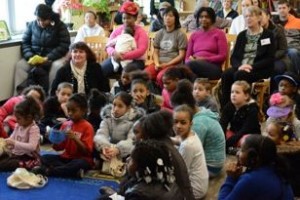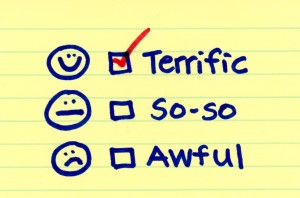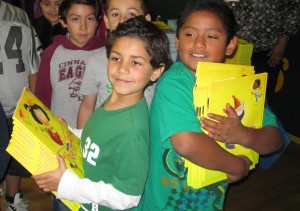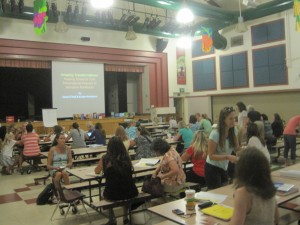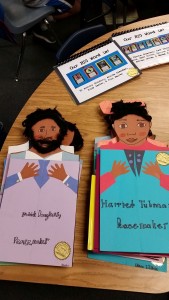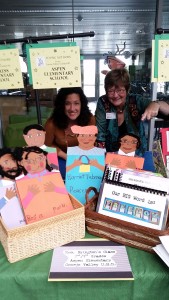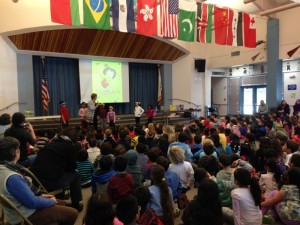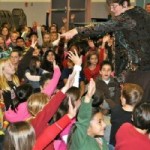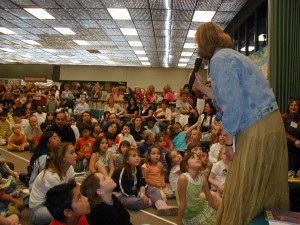
Poet Kristine O’Connell George wowed the Family Night crowd during the Simi Valley Friends of the Library Children’s Book Week celebration.
For most schools, the biggest obstacle to bringing in an author is money. But because they have been dedicated to connecting kids with authors for twenty years, the Simi Valley Friends of the Library in Simi Valley, California has established a grant program that removes a big chunk of that obstacle for local public elementary, middle and high schools.
HOW IT STARTED. In 1996, The Simi Valley Friends of the Library joined forces with the Ventura County Reading Association and held a “Read Out” in a local mall featuring local authors and storytellers. For the next two years, they held a Children’s Book Festival on a weekend at the library featuring several authors and storytellers.
But the committee wanted to deepen the connections between students and authors, so they began an Author-in-Residence Program in 1999 during Children’s Book Week. They wrote grants and did local fundraising to bring in two authors for a week to do assemblies in schools. The Friends and the schools shared in the cost. On the weekend, a culminating family event at the library celebrated families “reading together, growing together.”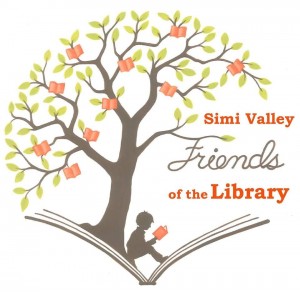
WHAT CHANGED. This format continued, expanding the number of authors to four, through 2005. With changes in committee make-up, the Friends decided to return to the one-day celebration format, but created an open-ended author program that continues to this day.
HOW IT’S DONE. The Friends established a Day-with-an-Author grant program in 2006. For the past ten years, the Friends has budgeted for grants in the amount of $400 per school to assist with the honorarium for an author visit. Money for this project is raised through the sale of used books throughout the year.
The grant process is extraordinarily simple: the school fills out a form identifying their choice of author or illustrator (who must be published with a trade publishing house) and the date on which they will be appearing at the school. The coordinator for the Day-with-an-Author program submits a check request to the Friends treasurer, and the check is sent to the school’s author visit host to give to the author on the day of their appearance. The school is responsible for paying the balance of the author’s honorarium.
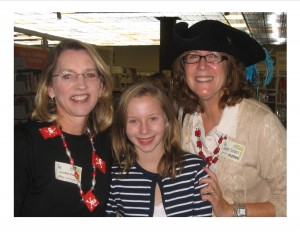
Carolyn Henger Oaks (left) currently manages the author visit grant requests from schools. She’s pictured with her daughter, Maggie, and author June Sobel during a pirate-themed Family Night event.
To assist the schools, the Friends supplies a list of published authors from the greater Los Angeles Region, suggestions on how to find the best author “fit” for their school, a Day-with-an-Author Planning Guide and a sample form for book orders. They update the information annually and distribute it to the schools via parent organizations.
Schools appreciate that they can book an author anytime that’s best for them during the school year rather than during a fixed week.
WHAT YOU CAN DO. Sharing the financial support for author visits with local schools makes everyone a partner in encouraging students to read and connect with book creators. This program would be so easy for other Friends of the Library groups to put in place, even in a modified way. Why not suggest this in your own community?

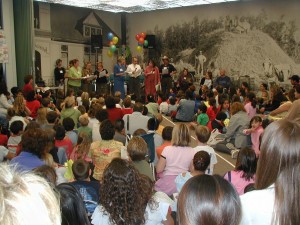
 It came out of the blue — a love letter in
It came out of the blue — a love letter in 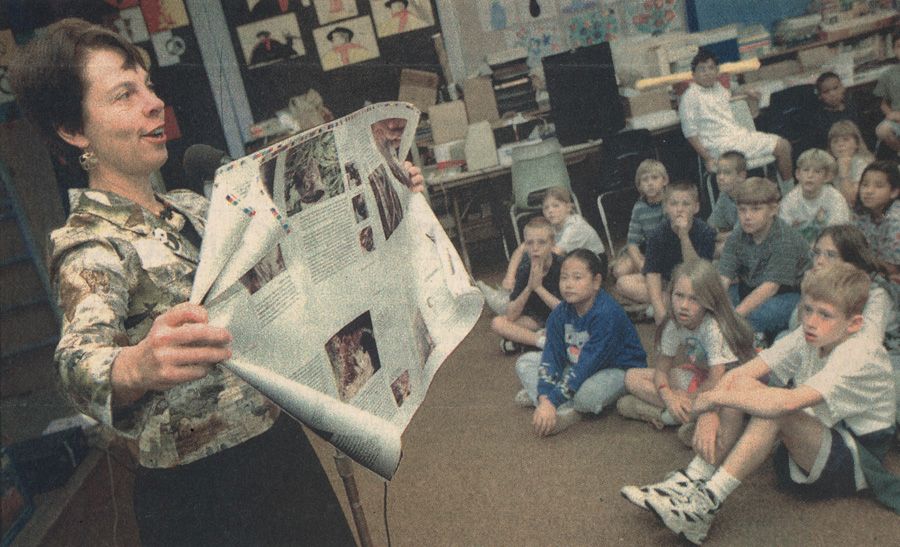 Sun, 10 Jan 2016
Sun, 10 Jan 2016